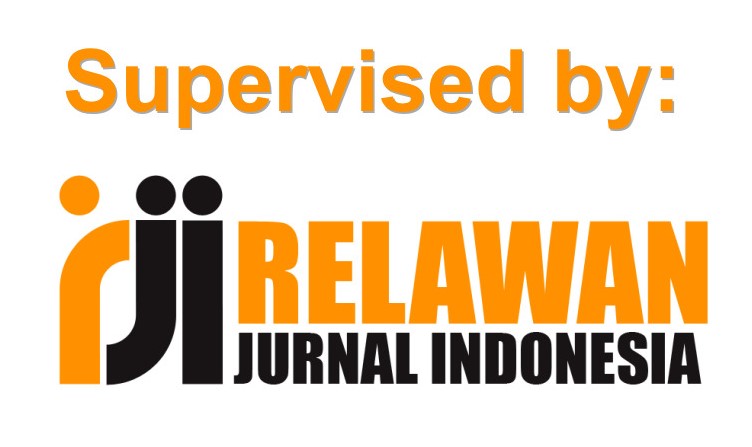Penerapan Moving Average Pada Prediksi Penjualan Accu
Abstract
The problem faced by TIO ACCU is the difficulty of providing stock according to consumer needed, it caused every month has difference sale of product. The purpose of this research is to create a battery sales prediction system using the Moving Average method. The Moving Average algorithm used for past sales data doesn’t has seasonal trends or elements. This method is applied to predict the number of battery sales in future periods. The results from 5 periods and validity test with 31 sales data for the MAD method is 3.90, for the MSE method is 20.09, and for the MAPE method is 7.72%. Meanwhile, the results of calculation 7 periods with validity test of 29 sales data for the MAD method is 3.70, the MSE method is 18.90, and for the MAPE method is 7.28%. The test results of the battery sales prediction system using the Moving Average method have run well and optimally with accuracy rate of 92.28% for 5-period predictions and 92.72% for 7-period predictions can be classified as very good criteria, because it has an error rate of less than 10%.
Keywords
Full Text:
PDFReferences
A. Nurlifa and S. Kusumadewi, “Sistem Peramalan Jumlah Penjualan Menggunakan Metode Moving Average Pada Rumah Jilbab Zaky,” INOVTEK Polbeng - Seri Informatika, vol. 2, no. 1, p. 18, Jun. 2017, doi: 10.35314/isi.v2i1.112.
Sismi and M. Y. Darsyah, “Perbandingan Prediksi Harga Saham PT.BRI, Tbk dengan Metode Arima Dan Moving Average,” Prosiding Seminar Nasional Mahasiswa Unimus, vol. 1, no. 1, pp. 351–360, 2018.
R. Rachman, “Penerapan Metode Moving Average Dan Exponential Smoothing Pada Peramalan Produksi Industri Garment,” Jurnal Informatika, vol. 5, no. 2, pp. 211–220, Sep. 2018, doi: 10.31311/ji.v5i2.3309.
W. Wulandari, “Implementasi Sistem Peramalan Persediaan Barang Menggunakan Metode Moving Average,” JURNAL MEDIA INFORMATIKA BUDIDARMA, vol. 4, no. 3, p. 707, Jul. 2020, doi: 10.30865/mib.v4i3.2199.
U. I. Anjani, C. Suhery, and U. Ristian, “Prediksi Permintaan Produk Kopi Bubuk Menggunakan Metode Double Exponential Smoothing Berbasis Website (STUDI KASUS: PT. FASTRATA BUANA),” Coding: Jurnal Komputer dan Aplikasi, vol. 08, no. 01, pp. 93–101, 2020, doi: http://dx.doi.org/10.26418/coding.v8i1.39197.
Hasmawati, J. Nangi, and M. Muchtar, “Aplikasi Prediksi Penjualan Barang Menggunakan Metode K-Nearest Neighbor (KNN) (STUDI KASUS TUMAKA MART),” semanTIK, vol. 3, no. 2, pp. 151–160, 2017.
B. Landia, “Peramalan Jumlah Mahasiswa Baru Dengan Exponential Smoothing dan Moving Average,” Jurnal Ilmiah Intech : Information Technology Journal of UMUS, vol. 2, no. 01, pp. 71–78, May 2020, doi: 10.46772/intech.v2i01.188.
F. Hermawan and H. Agung, “Implementasi Metode K-Nearest Neighbor Pada Aplikasi Data Penjualan PT. Multitek Mitra Sejati,” Kalbiscienta Jurnal Sains dan Teknologi, vol. 4, no. 2, pp. 103–109, 2017.
DOI: http://dx.doi.org/10.30646/tikomsin.v11i1.722
Refbacks
- There are currently no refbacks.
Editorial Office :
TIKomSiN : Jurnal Teknologi Informasi dan Komunikasi Sinar Nusantara
Published by STMIK Sinar Nusantara Surakarta
Address KH Samanhudi 84 - 86 Street, Laweyan Surakarta, Central Java, Indonesia
Postal Code: 57142, Phone & Fax: +62 271 716 500
Website: https://p3m.sinus.ac.id/jurnal/index.php/TIKomSiN
Email: tikomsin @ sinus.ac.id

This work is licensed under a Creative Commons Attribution-NonCommercial-ShareAlike 4.0 International License.










